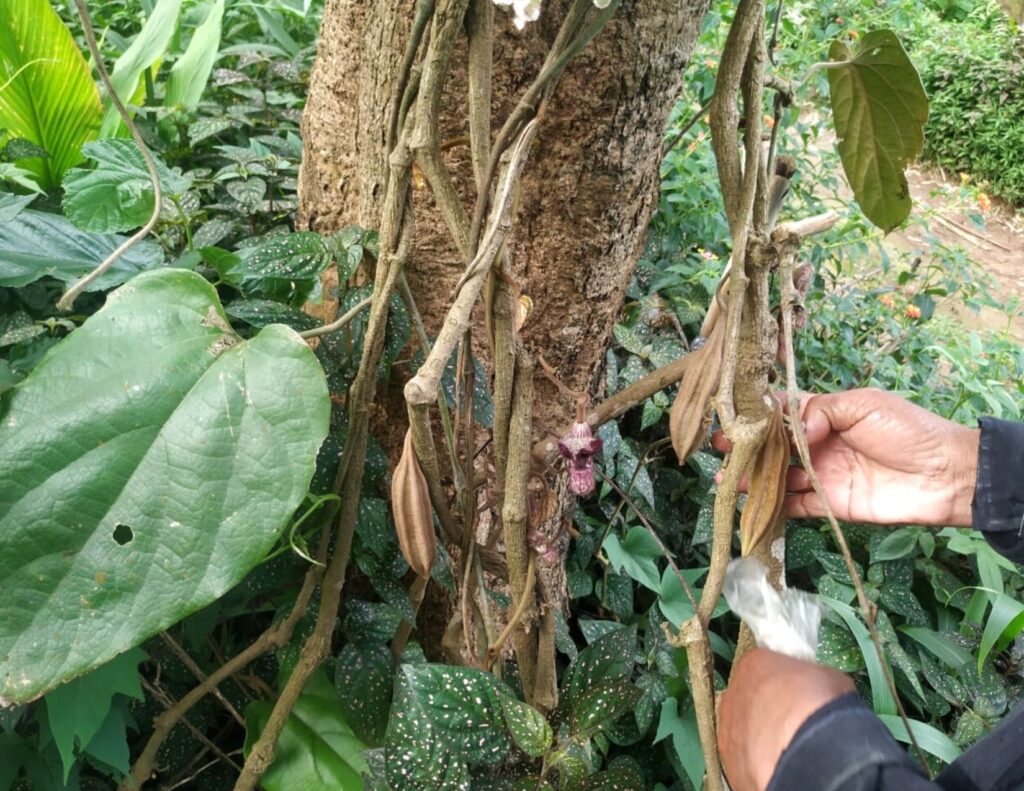For centuries, traditional healing methods have thrived in cultures around the world; in fact, in India traditional healing has been rampant since the olden times. These methods generally promoted a holistic wellness of the mind, body and spirit. The Northeast has its very own traditional healing methods and hence NESFAS recently ventured into the majestic West Jaintia Hills and explored the various traditional healers that lived there.

Pol Suting is a 45 year-old traditional healer from Moosakhia; she has been a herbal practitioner for over two decades; besides being a daily wage worker and a farmer of crops such as paddy and potatoes, she uses local herbs such as Jarain, Jasieh and Phlang Rashi to treat people ailing from serious wounds and snake bites. She prepares the medicine as and when necessary and one of her main aims is to propagate the culture of traditional healing to more people. She is a major help to the community and is a go-to person when it comes to traditional healing.
Siding Dkhar is a 78 year-old herbal practitioner from Mustem for over 30 years besides being a daily-wage worker and a farmer. Her main chore is to cure people who are suffering from urinary infection and toothache by using the medicinal properties of turmeric, long pepper and herbs such as Sla Pathaw Kyndeh (toothache plant) and Sla Pung Jung. She learnt traditional healing through a process of thorough experimentation and trial-and-error which turned out to be a huge success for her. She has benefitted several communities because of her magnanimity and she said, “As long as my age allows me, I will do whatever I can to build and strengthen my capacity and to continue the work that I do.” This is a testament to her amazing skills and big heart.

Mika Dkhar is a 75 year-old healer from Mulum who has been practicing it since the age of 19. He uses his abilities to help people from different communities who are suffering from stomach ache, and gastritis problems. He also prepares something called the ‘Dawai Ksuid, Dawai Thlen’ which is believed to cure something evil or unpleasant that may happen to one (as per superstitions). He has a certification from the Bio Resources Development Center of the Government of Meghalaya through the Ministry of Tribal Affairs. He identifies the herbs growing in the forest as well as his own kitchen garden to treat people and he has gained the respect of several communities across the country. He is on a mission to spread his knowledge on traditional medicine production and share his remedial wisdom with other communities
Kraswell Khyriem is a 60 year old traditional healer from Mupyut who makes use of medicinal herbs to cure illnesses such as urinary infection and diarrhea. He has been doing this for the past 32 years.
Liiol Suting is a traditional healer who provides remedies to people who have fallen prey to snakebites. He hails from Samanong, is in his mid-40s and has been practicing healing for the past 7 years with the knowledge he received from his brother. He uses herbs that he and his brother source from the forest.
Momris Sumer is a 73 year old traditional healer from Lumtrep who has been treating people for over 40 years; besides this, she is also a farmer and a member of the Lumtrep Agroecology Learning Circle. She uses pepper, ginger, brip brip, ryniaw and turmeric sourced from the forest or her kitchen garden to treat illnesses such as coughs and stomach-related problems. She assimilated all her knowledge from her uncle in her youth. She shared, “I would like to distribute and share this knowledge to my community fellows, so that they are able to prescribe and carry forward the same to others. I would like them to understand and learn the authentic methods of traditional healing and produce more remedies.”
All the above mentioned villages are active partners of the NESFAS’ ongoing project — “Empowering indigenous communities through Agroecology Learning Circles (ALCs) for resilient, integrated and innovative natural resource management” – which is supported by the Meghalaya Basin Management Agency (MBMA) and funded by the World Bank.



